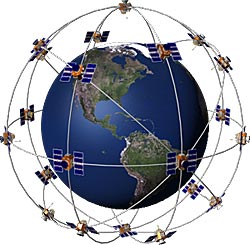1. Determine what you will be using the GPS receiver for. Believe it or not, GPS units are designed for a variety of uses, and the feature-set of each unit caters to different usage patterns. Some possible uses are:
* Vehicle Navigation - Driving on the road
* Off-Road Activities - Hiking, hunting, skiing, etc.
* Water Activities - Boating, fishing, etc.
* Aviation - Flying a plane
* Geocaching - Navigating to waypoints for fun treasure-hunting
2. Decide on the form-factor of your GPS receiver. This essentially describes the shape & size of the technology, or how small of a space you want to use GPS functions in. Some possibilities are:
* Handheld - A stand-alone unit that generally fits in one hand, with its own screen and buttons
* Laptop sensor - A small, plain "box" that connects to your laptop, and lets software on your laptop do the rest of the work
* PDA integrated - If you have a Palm or Windows Mobile PDA, you can get add-on sensors and software for them to do the same job as a laptop, but have it fit in the palm of your hand.
* Marine/Vehicle mount - Something which will stay in your vehicle or boat at all times, and only provide vehicle/craft navigation
* Wrist mount - Tiny GPSs have been integrated into wrist-watch form, ideal for jogging and other outdoor exercise purposes. Some of these units come with built-in fitness sensors, like heart rate monitors.
3. If you prefer the laptop sensor or PDA integrated types, your choices are limited only to compatibility with your operating system (Palm or Windows), and whether or not you want it to connect wirelessly. Ensure that both your laptop/PDA as well as the GPS unit are Bluetooth enabled if you expect wireless operation between the two. The rest of your functions will be determined by the software you use, which you can acquire independant of your hardware purchase. Despite this, all GPS units of this type will come with a packaged software bundle of some sort.
4. If you prefer a vehicle/boat mount unit, examine sizes, possible mount locations, antenna configurations etc. that are right for you. Consult your retailer for options. Some marine GPSs come with built-in fish finder features as well.
5. If you prefer a handheld unit, consider the following additional features and how important they are to you:
* Colour screen - More expensive, but some people find them easier to read
* Battery requirement & consumption rate - how many batteries does it take, which type, and how long does it take to drain them? Would you prefer a rechargable unit?
* Electronic compass - telling what direction you are facing while you are standing still. GPS units without this can only report your direction when you are moving.
* Barometric altimeter - calculating altitude based on air pressure
* Mapping - Displaying your current position on a map, uploading extra/custom maps into your unit
* Data entry - Some GPS units only allow you to upload waypoints from a PC, while others allow you to enter them while in the field
* Communications - Some GPS receivers have built-in two-way radios (ie: walkie talkies) to allow for communications as well as navigation. These units may provide position-sending functions so that you can locate others in your party
* Removable memory cards for maps - Some people prefer to be able to swap maps while in the field, rather than connecting their GPS unit to a laptop. You may purchase a GPS that provides a CompactFlash (CF) or SecureDigital (SD) slot for map cards if this is important to you.
6. While there are countless GPS brands on the market, both Garmin and Magellan brands have proven to be mainstays in the GPS arena. Each brand provides an online interactive tool to ask questions and recommend a product to you:
* Garmin Purchase Assistant - http://www.garmin.com/purchaseAssistant
* Magellan Product Finder - http://www.magellangps.com/ProductFinder
7. After you find the product that is right for you, check eBay to get an idea of what the market value is. This can often be well below the manufacturers suggested retail price found on the manufacturers website. Don't forget to factor eBay shipping into the price.
8. Armed with the knowledge of your ideal unit and how much you should expect to pay on eBay for it, visit the following stores in your local area to see if they carry the model you're looking for at a better price than eBay sells it for:
* Outdoor/trail shop - Anywhere that sells hiking or camping requipment
* Hardware store - Many hardware store chains sell GPS units in their hunting/outdoor departments.
* Department store - Stores such as WalMart carry GPS units in their hunting/outdoor departments.
* Marine equipment store - Even handheld units can be often be found at boat equipment shops.
9. The most important thing to remember about any handheld GPS unit is that the tiniest detail can ruin the experience for you. Buttons that are too small, or located in awkward places, or units that are *just* too big to fit in a certain carrier, etc. can all be deal breakers. The best way to deal with these challenges is to be sure that there is a money-back gaurantee or return policy if you find that the unit doesn't work for you in a practical environment. To this end, be sure to set aside time as soon as possible to test your new unit out as much as you can before your return policy runs out.
 Results are not guaranteed. This is just an example of what could happen. Please see terms for full details.
Results are not guaranteed. This is just an example of what could happen. Please see terms for full details.
